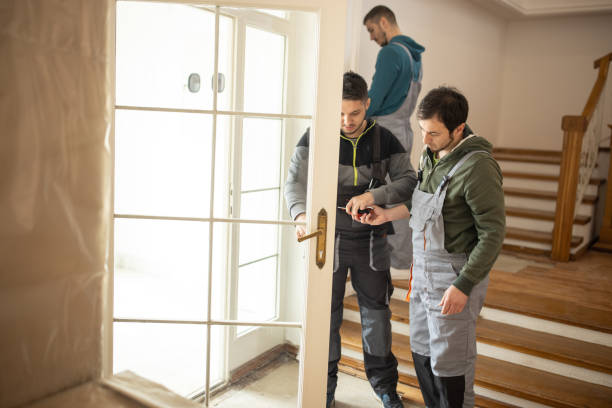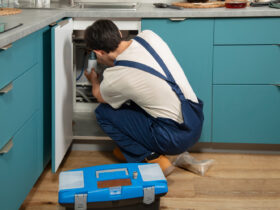Replacing glass doors in your home can be a transformative upgrade, enhancing both the aesthetics and functionality of your space. Whether you’re dealing with a broken glass door, seeking a modern upgrade, or simply improving energy efficiency, glass door replacement offers numerous benefits. This comprehensive guide will walk you through everything you need to know about glass door replacement, from choosing the right type to understanding the installation process.
Understanding the Importance of Glass Door Replacement
Benefits of Glass Door Replacement
Glass door replacement is more than just a cosmetic change; it provides several practical benefits:
- Improved Energy Efficiency: Modern glass doors are designed with advanced insulation technology, helping to reduce energy bills by keeping your home warmer in the winter and cooler in the summer.
- Enhanced Security: Upgrading to newer, sturdier glass doors can improve your home’s security by featuring reinforced glass and advanced locking mechanisms.
- Increased Home Value: A new glass door can significantly boost your home’s curb appeal and overall market value, making it a worthwhile investment for future resale.
Types of Glass Doors to Consider
When planning a glass door replacement, it’s important to select the type that best fits your needs and style preferences. Here are some popular options:
- Sliding Glass Doors: Ideal for small spaces, sliding doors offer a sleek, space-saving solution and seamless indoor-outdoor flow.
- French Doors: These double doors add a touch of elegance and are perfect for creating a classic look while allowing ample natural light.
- Bi-Fold Doors: Perfect for larger openings, bi-fold doors can fold away to create an open, expansive space when fully opened.
Choosing the Right Glass Door for Your Home
Factors to Consider
Selecting the right glass door involves several key considerations:
- Glass Type: Choose between clear, frosted, or tinted glass based on your privacy needs and aesthetic preferences. Energy-efficient glass options like Low-E (low-emissivity) coatings can also help with insulation.
- Frame Material: Frames are available in various materials, including wood, aluminum, and fiberglass. Consider the durability, maintenance requirements, and appearance of each material.
- Style and Design: Ensure the design of your new glass door complements the overall style of your home. Modern, traditional, or transitional styles should align with your existing decor.
Measuring for Replacement
Accurate measurements are crucial for a successful glass door replacement. Here’s a simple guide to ensure a perfect fit:
- Measure the Existing Door Frame: Use a tape measure to record the height, width, and depth of the current frame. Measure at multiple points to account for any variations.
- Check for Levelness: Ensure the frame is level and square. If it’s not, adjustments may be needed before installing the new door.
- Consider the Threshold: Measure the threshold height and width to ensure compatibility with the new door.
The Installation Process
Preparing for Installation
Before the installation of your new glass door, prepare the area by:
- Removing the Old Door: Carefully take out the old door and its frame. Check for any damage to the surrounding area that may need repair.
- Cleaning the Area: Ensure the installation area is clean and free from debris to provide a smooth surface for the new door.
Professional Installation vs. DIY
While some homeowners may opt for a DIY approach, professional installation is often recommended for glass door replacement:
- Professional Installation: Ensures that the door is properly fitted, sealed, and aligned. Professionals can also handle any structural adjustments and ensure compliance with local building codes.
- DIY Installation: If you choose to install the door yourself, follow the manufacturer’s instructions carefully and use the proper tools and techniques to avoid mistakes.
Final Steps
After the door is installed:
- Inspect the Door: Check for proper operation, including smooth sliding or opening and closing.
- Seal and Weatherproof: Apply weatherstripping and sealant to prevent drafts and water infiltration.
- Clean the Glass: Remove any fingerprints or smudges from the glass to ensure a clear view.
Maintaining Your New Glass Door
Regular Care and Cleaning
To keep your glass door replacement looking its best:
- Clean Regularly: Use a glass cleaner and a soft cloth to clean the glass surface. Avoid abrasive cleaners that could damage the glass.
- Inspect Seals: Regularly check the weatherstripping and seals for wear and replace them as needed to maintain energy efficiency.
Addressing Common Issues
If you encounter problems with your new glass door:
- Handling Sticking Doors: Lubricate the tracks and hinges to resolve sticking issues. Ensure that the door is properly aligned.
- Repairing Chips or Cracks: Address any damage to the glass promptly to prevent it from worsening. Consult a professional for repairs or replacement if necessary.
Conclusion
Glass door replacement is a significant upgrade that can enhance the look and functionality of your home. By understanding the benefits, choosing the right type of door, and following proper installation and maintenance procedures, you can ensure a successful replacement that meets your needs and exceeds your expectations. Whether you opt for a professional installation or tackle the project yourself, a new glass door can provide lasting value and beauty to your home.







